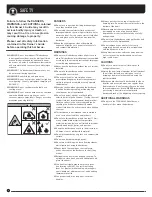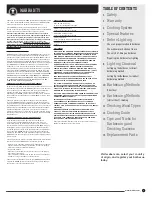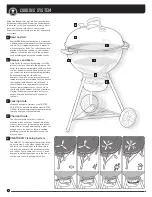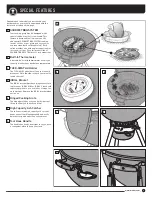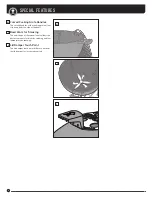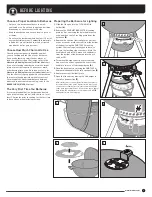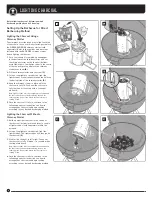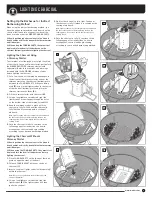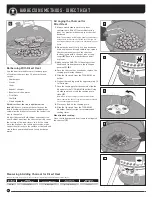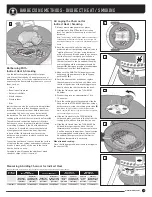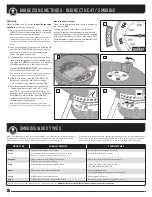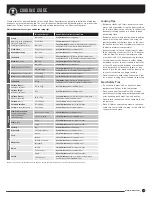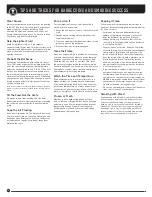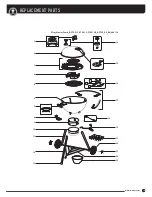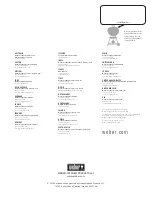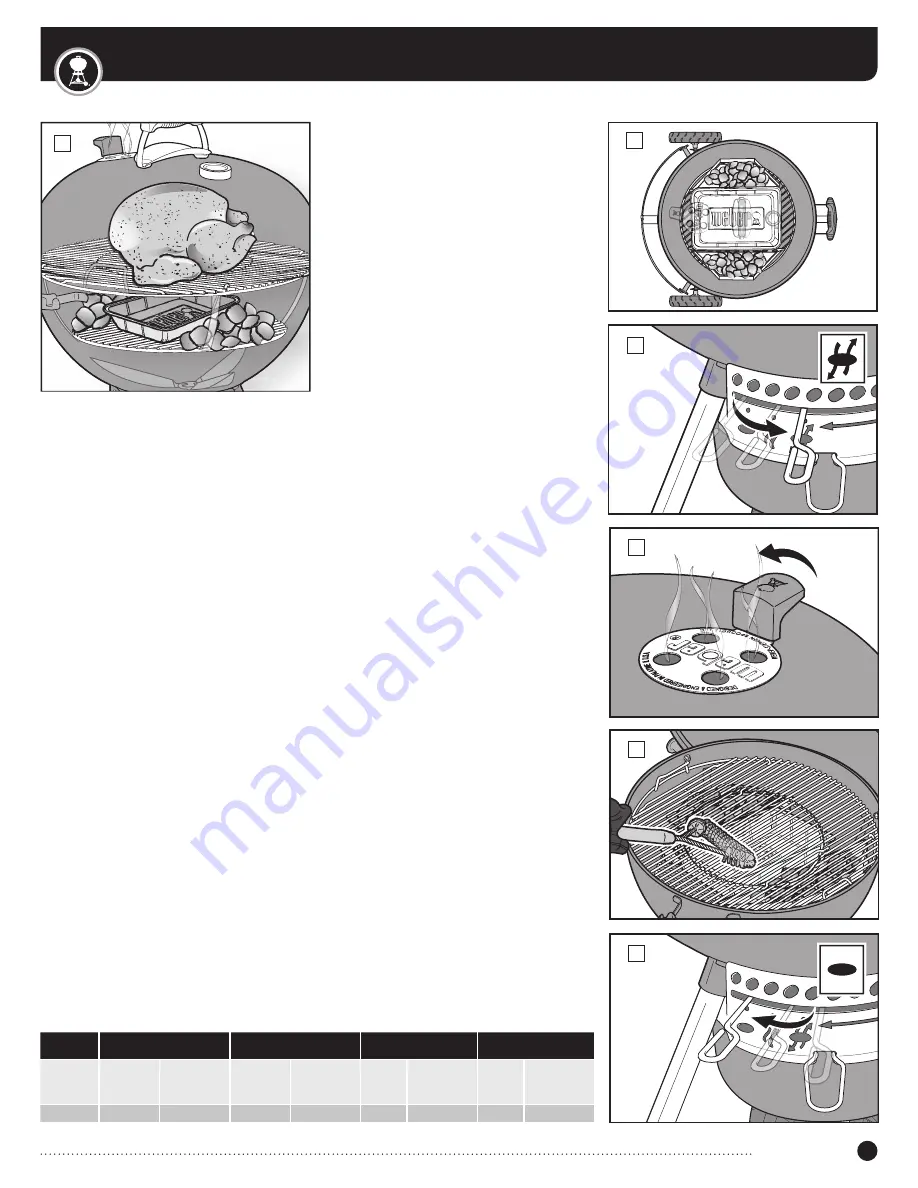
11
www.weber.com
A
BARBECUING METHODS - INDIRECT HEAT / SMOKING
B
C
D
E
F
Measuring & Adding Charcoal for Indirect Heat
*When measuring lump charcoal, use the charcoal measuring cup provided with your barbecue.
Barbecue
Diameter
WEBER
Charcoal Briquettes
Charcoal Briquettes
Beech wood
Lump Charcoal*
Mixed Wood
Lump Charcoal*
Briquettes
for first hour
(per side)
Briquettes
to add for each
additional hour
(per side)
Briquettes
for first hour
(per side)
Briquettes
to add for each
additional hour
(per side)
Charcoal
for first
hour
(per side)
Charcoal
to add for each
additional hour
(per side)
Charcoal
for first
hour
(per side)
Charcoal
to add for each
additional hour
(per side)
57 cm
15 briquettes
4 briquettes
20 briquettes
7 briquettes
½ cup
1 handful
½ cup
1 handful
Barbecuing With
Indirect Heat & Smoking
Use the indirect/smoking method for larger
cuts of meat that require 20 minutes or more of
barbecuing time, or for foods so delicate that direct
exposure to the heat would dry them out or scorch
them, such as:
• Joints
• Bone-in poultry pieces
• Delicate fish fillets
• Whole chickens
• Whole turkeys
• Ribs
Indirect heat can also be used for finishing thicker
foods or bone-in cuts that have been seared or
browned first over direct heat. With indirect heat
or smoking, the heat is on one or both sides of
the barbecue. The food sits on the portion of the
cooking grate without charcoal directly below it
(A).
The radiant and conductive heat are still factors,
but they are not as intense while indirect cooking
or smoking. However, if the lid of the barbecue
is closed, as it should be, there is another kind
of heat generated: convection heat. Heat rises,
reflects off the lid and inside surfaces of the
barbecue, and circulates to slowly cook the food
evenly on all sides.
Convection heat doesn’t sear or brown the surface
of the food the way radiant and conductive heat do.
It cooks it more gently all the way to the centre,
like the heat in an oven.
Smoking food will require the addition of wood
chunks or chips to the lit charcoal.
Arranging the Charcoal for
Indirect Heat / Smoking
1. Always wear barbeque mitts or gloves
conforming to EN 407(Contact Heat rating
level 2 or greater) when using your charcoal
barbecue.
Note: The barbecue, including the handles and damper/
vent handles, will become hot. Make sure that you are
wearing barbecue mitts or gloves to avoid burning your
hands.
2. Once the charcoal is fully lit using your
preferred indirect barbecuing method (refer to
“Lighting Charcoal” section), using barbecue
mitts or gloves and long handle tongs, be sure
that the charcoal is properly positioned on
opposite sides of the bowl. Avoid positioning
the charcoal next to the lid and bowl handles,
or directly beneath the thermometer and lid
damper
(B). A drip pan may be placed between
the charcoal to collect food drippings.
3. Make sure the ONE-TOUCH cleaning system
handle and lid damper are in the fully open
position
(C), (D).
4. Once the charcoal has ashed over, replace
the cooking grate inside the bowl. Make sure
that the hinged sides of the cooking grate are
directly above the charcoal inside the bowl.
5. Slide the lid closed from the TUCK-AWAY
lid holder.
6. Preheat the grate for approximately 10 to
15 minutes.
7. Once the cooking grate is preheated, slide the
lid open into the TUCK-AWAY lid holder. Using a
barbecue brush, scrub the cooking grate clean
(E).
Note: When using a stainless steel bristle barbecue
brush, replace the brush if any loose bristles are found
on the cooking grate or brush.
8. Slide the lid open into the TUCK-AWAY lid
holder and place your food in the centre of the
cooking grate, above a drip pan if using one.
9. Slide the lid closed from the TUCK-AWAY lid
holder. Always position the lid so that the
thermometer is not above the charcoal where
it will be exposed to direct heat. Consult recipe
for recommended cooking times. Adjust the
lid and bowl dampers to lower the interior
barbecue temperature if necessary.
When finished cooking...
Close the lid damper and bowl vents to extinguish
the charcoal
(F).


